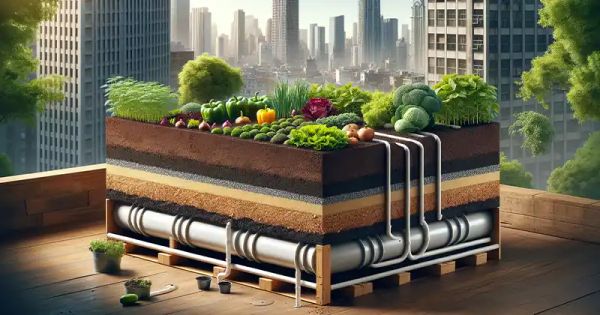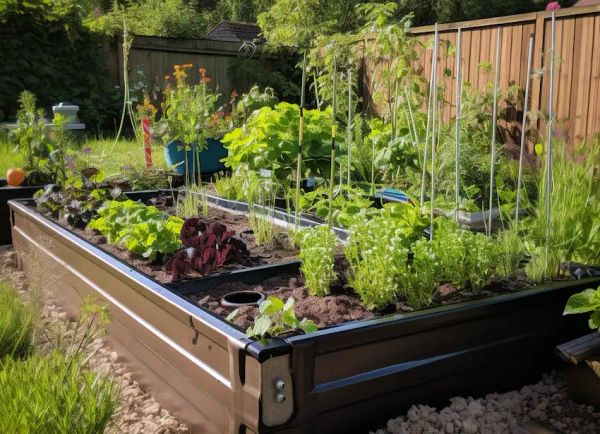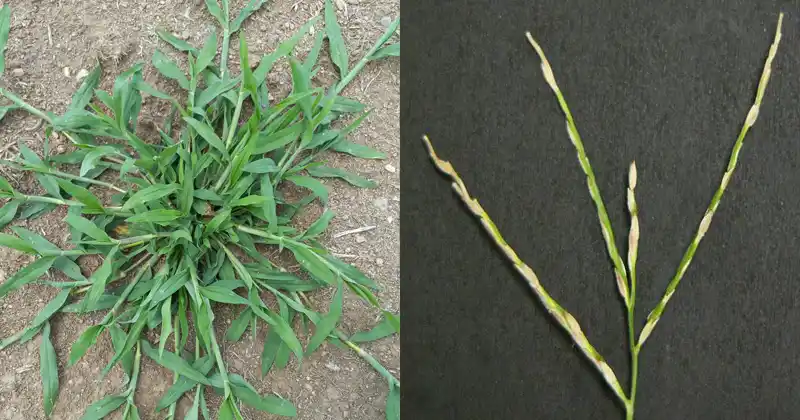
In cities where green spaces are limited and concrete dominates the landscape, the wicking bed offers a sustainable solution. It transforms small areas into vibrant gardens while conserving water and combating drought. Let’s explore this innovative gardening method and discover how it can make a difference in urban environments.
The Wicking Bed: A Smart System
A wicking bed is essentially a self-watering raised garden. It works by utilizing water efficiently, allowing plants to draw moisture from a built-in reservoir. This reduces the need for constant watering. Picture this: the magic unfolds as water is evenly distributed along the length of an ‘L’-shaped pipe that rises above the soil, making it easy to fill and monitor water levels. This clever setup relies on capillary action, much like a paper towel absorbing a spill.
Creating Your Own Garden Masterpiece
To build your own wicking bed, follow these step-by-step instructions that are key to ensuring the success of the water distribution system:
1. Select the Right Container: Start with a sturdy container that can hold a significant amount of soil and has space for a water reservoir. You can choose a custom wooden frame, an old bathtub, or repurpose a large planter.
2. Seal the Deal: Line your chosen container with a high-quality waterproof membrane to create the water reservoir. Properly seal it to prevent any leaks.
3. Install the ‘L’-Shaped Pipe: Lay a perforated PVC pipe horizontally along the length of the bed, on top of the aggregate. This pipe allows water to be evenly distributed. At one end, the pipe bends upwards, extending above the height of the bed, serving as the filling point.
4. Add Aggregates: Fill the bottom of the bed with a layer of coarse aggregate, like gravel, ensuring it is level. This is where the water will be stored.
5. Geotextile Barrier: Cover the aggregate and the horizontal part of the pipe with a geotextile fabric. This prevents soil from washing into the reservoir while still allowing water to wick upwards.
6. Add Soil: Pour nutrient-rich soil on top of the geotextile fabric. Use soil suitable for the plants you want to grow, whether it be vegetables, herbs, or flowers.
7. Overflow Outlet: Install an overflow valve or pipe at the level where the soil meets the aggregate. This is crucial to prevent waterlogging by allowing excess water to escape.
8. Plant and Mulch: Plant your seeds or seedlings into the bed and cover the surface with organic mulch. This helps minimize evaporation.
9. Water and Observe: Fill the reservoir through the vertical pipe until water begins to overflow. Then, sit back and watch as your plants thrive with minimal maintenance, drawing up water from below.

By building this wicking bed, you are taking a step towards self-sufficiency and resilience in urban gardening. Embracing this method means committing to a sustainable future, where resource conservation and green living flourish in our cities.




